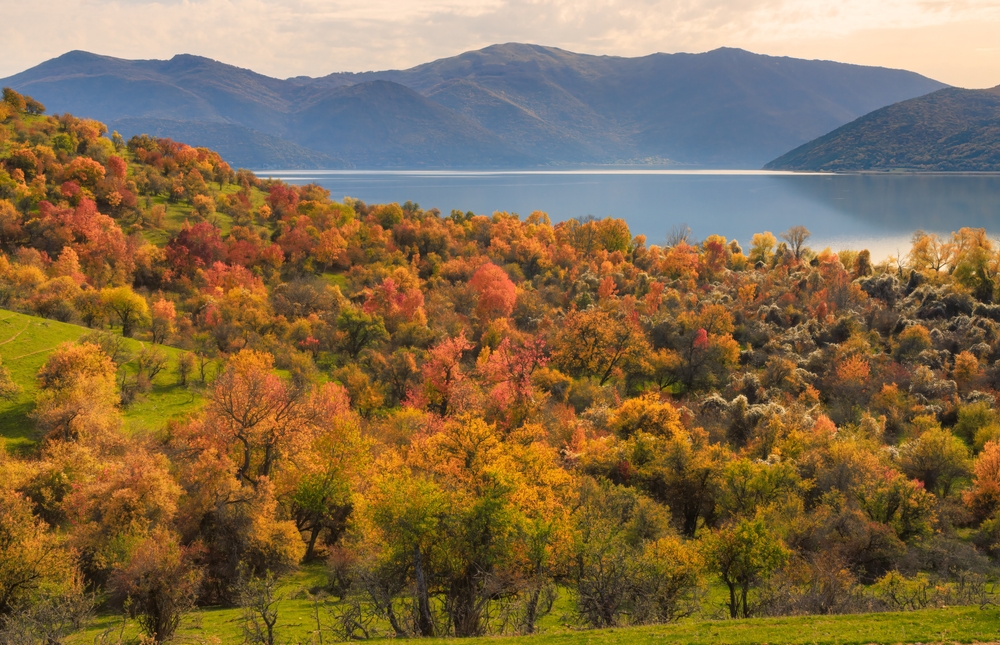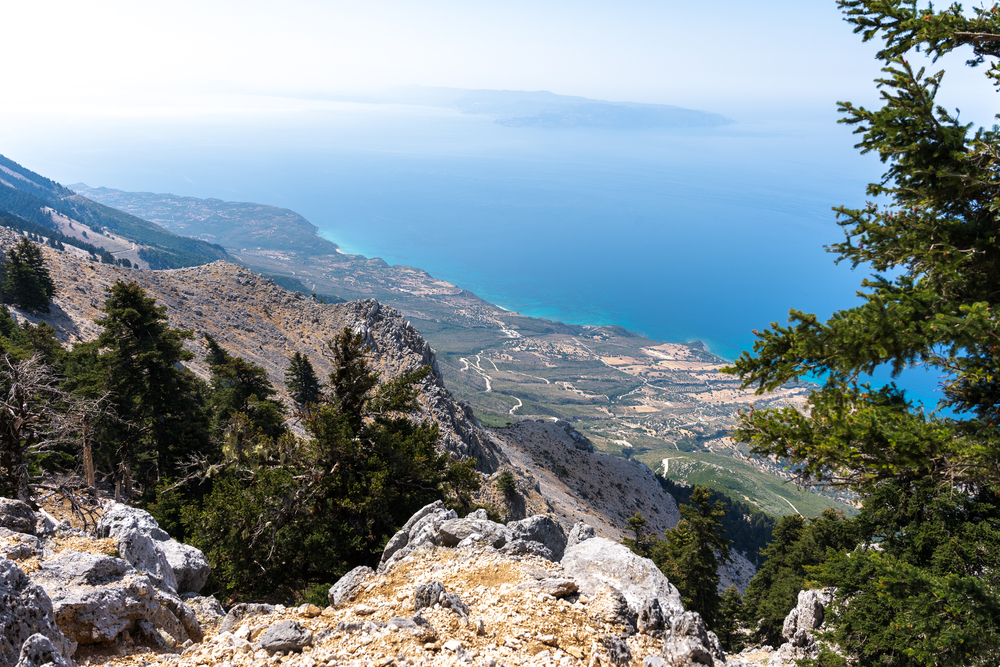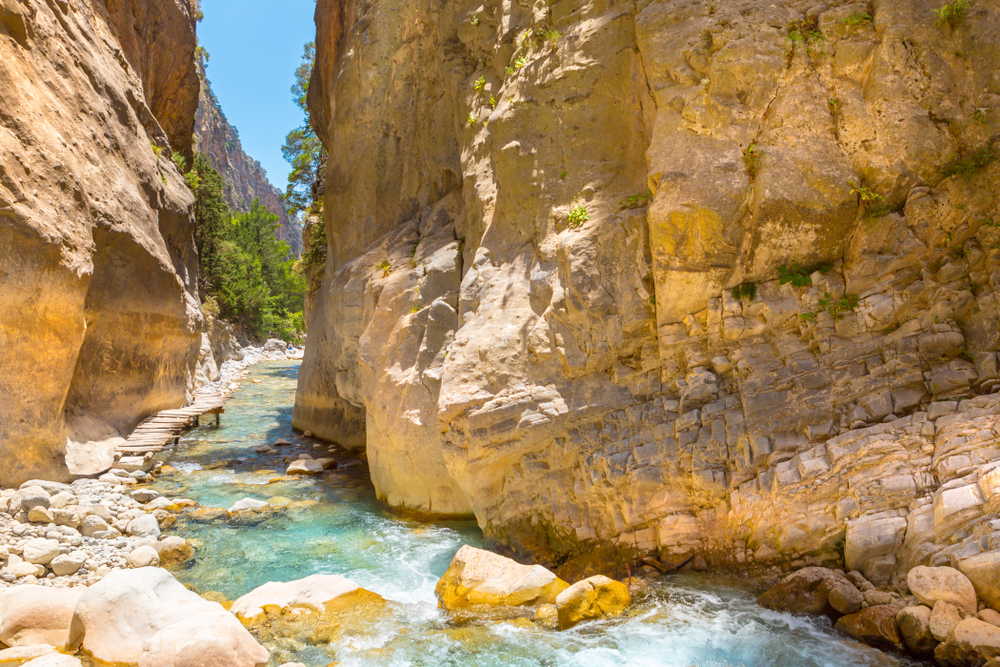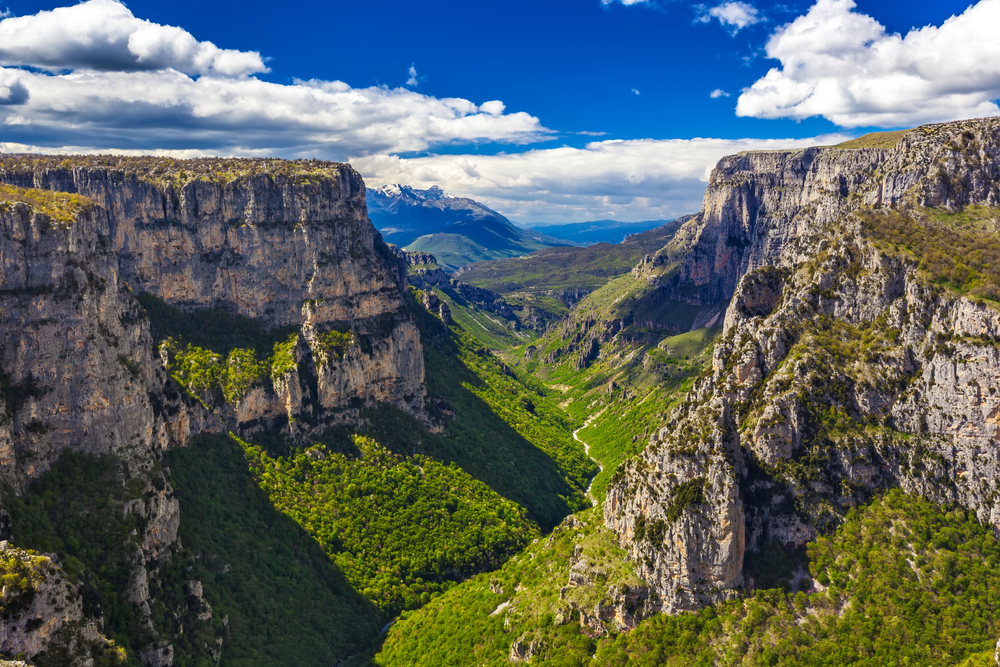Mount Parnassus Overview
Mount Parnassus National Park, known in Greek as Εθνικός Δρυμός Παρνασσού, is located in central Greece, covering approximately 91 square miles (235 square kilometers).
It is one of the country’s most famous national parks, known for its striking limestone formations, lush forests, and historical significance. The park is centered around Mount Parnassus, which rises to an impressive 8,061 feet (2,457 meters) and is deeply tied to Greek mythology as the home of the Muses and the site of the sacred Oracle of Delphi.
Its terrain varies from rocky cliffs to dense fir forests, offering diverse landscapes that change with the seasons. The lower slopes of the mountain are covered in Greek fir (Abies cephalonica) and black pine, while the higher elevations give way to alpine meadows and craggy outcrops.
The park is home to a variety of wildlife, including mammals such as wild boar, red foxes, European badgers, and roe deer. The rugged cliffs and dense forests provide a haven for bird species like the golden eagle, peregrine falcon, and various owl species, making it a prime destination for birdwatching.
Smaller mammals such as martens and hares also thrive in this diverse ecosystem. The rich biodiversity of the park is one of its key ecological treasures, supporting both common and rare species that have adapted to the mountainous terrain.
One of the most famous features of Mount Parnassus National Park is the ancient site of Delphi, a UNESCO World Heritage Site that attracts visitors from around the world. The ruins of the Temple of Apollo, the ancient theater, and the Tholos of Delphi stand as a testament to the region’s historical and cultural significance.
Apart from its archaeological importance, the park is also known for its extensive network of hiking trails that lead through scenic forests, caves, and viewpoints overlooking the Corinthian Gulf. The Corycian Cave, a site linked to ancient rituals dedicated to the god Pan, is a popular spot for visitors interested in mythology and history.
Outdoor enthusiasts can engage with the park through hiking, rock climbing, and mountaineering, with trails ranging from easy walks to challenging ascents. The European long-distance path E4 passes through the park, offering breathtaking views of the surrounding valleys and coastlines.
During the winter months, the nearby Parnassos Ski Center becomes a major attraction, drawing skiers and snowboarders to its slopes. The mix of historical, cultural, and natural attractions makes the park a year-round destination.
Conservation efforts within the park focus on protecting its unique ecosystems and preserving its historical landmarks. Challenges include the impact of tourism, illegal hunting, and climate change, which threaten the delicate balance of flora and fauna. However, conservation successes have been achieved through habitat restoration projects and sustainable tourism initiatives that help minimize human impact on the environment.
Strict regulations on development and visitor activity within the park aim to ensure the long-term preservation of its landscapes and biodiversity. Mount Parnassus National Park remains a vital natural and cultural treasure, offering visitors a chance to experience the beauty of Greece’s wilderness while connecting with its rich history.
















































































